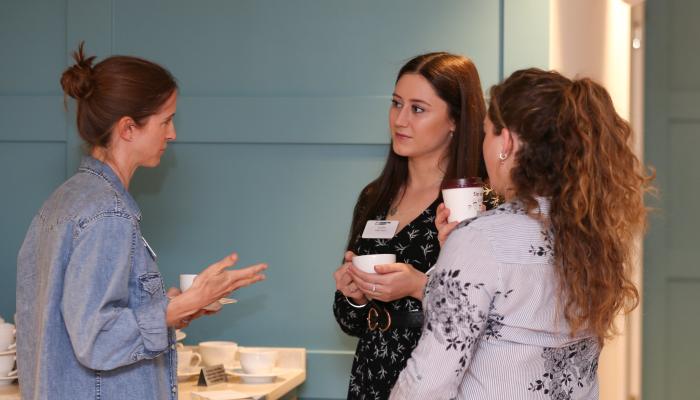In the second in our series “How to make advertising more inclusive”, we’re turning the spotlight on research. We explore how to not alienate minority communities by ensuring we actually base our thinking on lived experiences, and not our gut, Google and guesswork.
Last month you might remember I introduced a parallel universe where a bunch of Hippos (the majority community) in an ad agency were trying to reach some young lions (the minority community). And struggling.
So I thought we’d wiggle through that wormhole again and use the Hippos to explain why the research your large, round, water-loving animals are doing is most likely alienating your Lion consumers.
And how, with some tweaks in timing and approach, you can not only properly talk to those consumers, but also find huge new revenue streams.
So, the brief for your campaign to reach Lions aged 50+ is ready and it's been given to your agency, Hippo, Hippo, Crocodile and Lemur. The planners and strategists get cracking on doing the research.
At this point, there is a good chance that one potentially very costly mistake for your business has already been made by you and another, equally costly mistake for your campaign, is about to be made by the Hippos.
So here are three tips to ensure these mistakes aren't made:
Research your product (with proper research!) before you create your campaign
This is maybe where you're thinking “who’s this cocky little herbert telling me how to do my job?”, but from our experience, not many clients actually research their products specifically within minority communities. Google seems to be the go-to place, but no one actually asks the audience themselves. For example, we recently worked with a big FMCG company that makes yoghurt. They wanted to target people in the South Asian community.
We did some research with our consultants within that community and found out that yoghurt is used in a very different way to the white community. Some South Asian communities have yoghurt to settle their stomachs before big cultural events where a lot of rich foods are consumed, such as Ramadan. Some other communities within the South Asian Spectrum mainly eat yoghurt as part of their lunch and dinner as opposed to breakfast or a snack. Uncovering this nuance not only helped them create more inclusive work that wouldn’t alienate and annoy the audience by showing people in the ad using the product properly but also opened up a massive new revenue stream for them with a whole new audience. Diversity doesn’t just have a moral case it does have a strong business case too.
To find these new revenue streams for yourselves, find out how your product is used in those communities by going out and talking to them, and drive your insights and briefings from that - not from assumed information based on your own limited experience.
Ensure you and your agency actually speak to the consumers you are trying to reach (It feels hard in our industry but is very possible)
Now you have the correct brief, why waste it on a campaign based on Google searches and more assumed knowledge? If most of the advertising we create as an industry was to be believed you'd think Indian people sat around on Sundays wearing Sarees and all disabled people spend their whole time playing sports. Obviously, there is much more to these two communities than that.
The biggest issue with following the current approach is that consumers are living and breathing this education and learning all day every day - especially in Gen Z. Media and advertising just isn’t. Very few of us are trying to learn anything new. And if this doesn’t change we will be left behind producing boring content that has been done a million times, not showing the different ways in which people are living and alienating huge swathes of our audience.
And as a result, your products and messaging and therefore, your brand, will be more distanced from your consumers than ever.
Basic level strategy tells us that the best insights are the ones that deliver overall rich experiences for the consumer. It’s not about finding a narrative that suits you, but narratives and insights that you can share back with that community; to nourish and allow them to be part of.
The research we carry out is very much based on this thinking. It's about speaking to real people. We’ve sourced them all independently and we vigorously check their responses. It’s impassioned and robust and the way we work allows us to bring those people on the journey with us.
So challenge your agencies to do the same for you. Don't just shout about your products to minority communities, bring them on board and let them help you grow.
Understand that the mass audience you are aiming for isn't a mass audience at all
For the final point, I have a question. If you have 66% of an audience? Is that mass market reach? I would argue not. 33% of the UK population falls into the category of minority audience - whether that be through sexual orientation, ethnicity or other. If you aren’t trying to reach them in your communications, you aren't reaching a mass audience, you’re actually reaching a niche one.
So get a meeting in with your marketing team and your Hippos and stop following your gut, Google and guesswork and start talking and listening to the Lions you are trying to reach, then you can make intelligent work that will resonate authentically.



